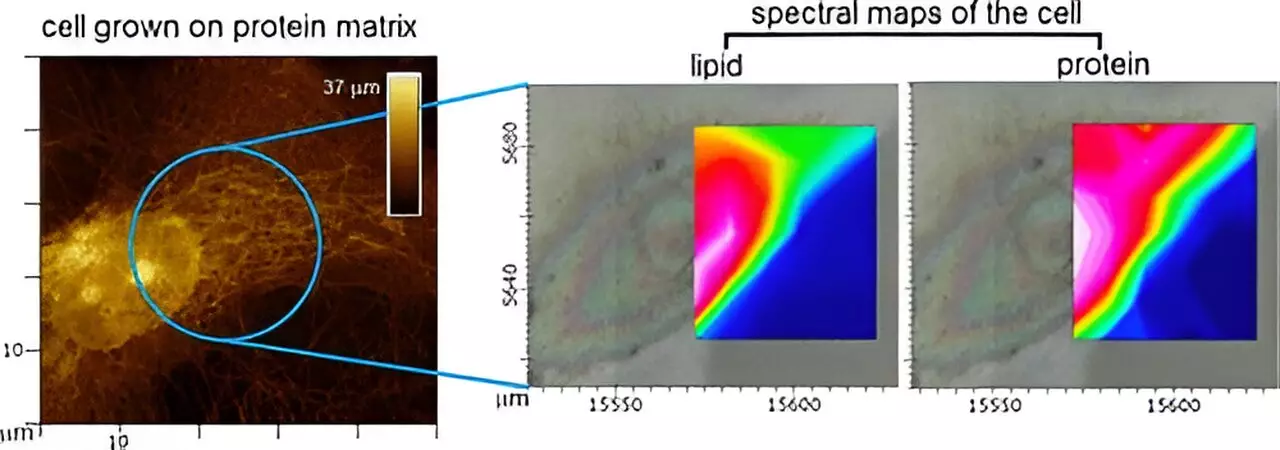Research conducted by scientists at NPL in collaboration with Diamond Light Source has shed light on the intricate relationship between the chemistry of human cells and the structure of their extracellular environment. This study, published in ACS Applied Materials & Interfaces, explores how the composition of the extracellular niche influences cell responses and development pathways.
The human body relies on the specialization of stem cells into primary cells to regenerate and repair tissues. These cells organize themselves into tissues based on the cues provided by the extracellular matrices or scaffolds. The interaction between cells and their environment plays a crucial role in determining cell behavior and ultimately impacts health care and technology innovation.
While microscopy and biological assays are valuable tools for assessing cell function, they often fall short in capturing the chemistry of cells. Understanding how the chemical composition of cells changes in response to different environments is essential for developing effective cell-based diagnostics and therapies.
To address this gap in knowledge, scientists at NPL leveraged InfraRed spectroscopy to map the chemical profiles of human primary and stem cells grown on various matrices. By combining physical imaging techniques, such as light and atomic force microscopy, with chemical spectra, the researchers were able to correlate the chemistry of cells with their structural properties.
This groundbreaking study was made possible through collaboration with beamline scientists at Diamond Light Source, biologists from Sheffield and London Colleges, and data experts from Cambridge. By working together, the team developed a spectral imaging approach that not only provided chemical maps of individual cells but also allowed for comparisons of cell responses to matrices with different physical characteristics.
The findings of this study have significant implications for health care and tissue regeneration. By elucidating the relationship between cell chemistry and extracellular matrices in 2D environments, the research opens doors for the development of more advanced methodologies for studying cell-matrix interactions in 3D. This knowledge paves the way for innovative solutions in health care and human tissue regeneration.
The collaborative efforts of scientists at NPL and their partners have provided valuable insights into the complex interplay between human cell chemistry and extracellular environments. This research represents a significant step towards advancing our understanding of cell behavior and has the potential to revolutionize approaches to health care and tissue regeneration.


Leave a Reply